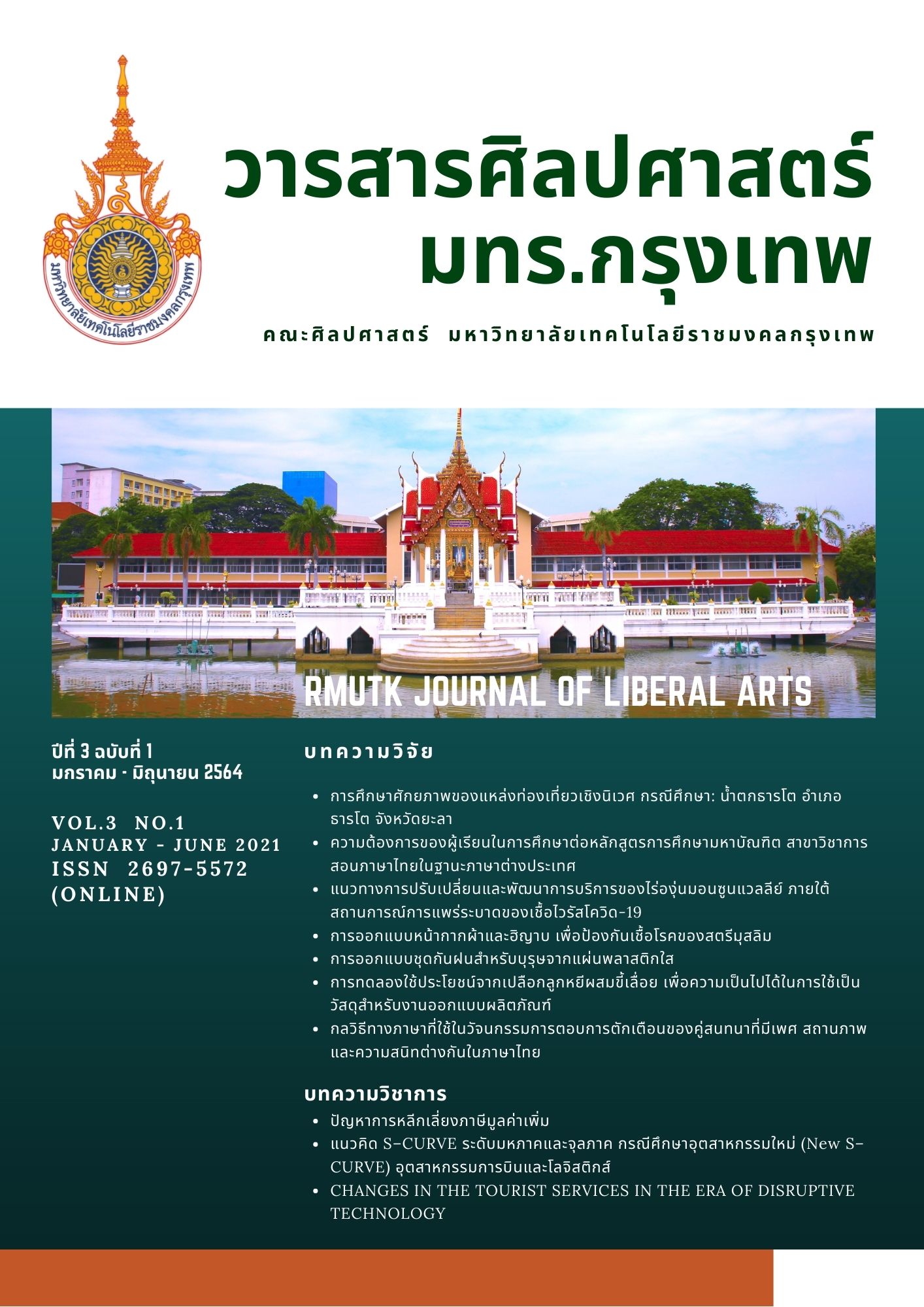CONCEPT OF S-CURVE AT THE MACRO AND MICRO LEVEL CASE STUDY OF THE NEW S-CURVE: AVIATION AND LOGISTICS INDUSTRY
Main Article Content
Abstract
This article aims to explain and synthesize the S-curve concept at the macro level: the economic system, the micro level: the business or organization units and a case study of aviation industry and logistics (New S-curve). The S-curve concept can be explained by EGOIN theory and Triple C theory. This concept connects both the economic level and the business unit level to drive the economy based on the country's innovation under the concept of "Thailand 4.0". The key issue is driven by training human capital through trade and foreign investment opportunities in the form of sharing, transferring or exchanging knowledge with higher technology and innovative organizations. This enables labor force to master new knowledge and become more skillful which eventually benefits the business units in a way that they are capable of developing their own innovation or technology, resulting in elevating earnings of business, industrial and national levels.
Article Details
References
จิรดา นาคฤทธิ์. (ม.ป.ป.). วงจรชีวิตผลิตภัณฑ์ (Product Life Cycle:PLC). สืบค้นจาก https://shorturl.at/nsM28
ถนัด แก้วเจริญไพศาล. (2560). ยุทธศาสตร์กำลังคนในระบบนิเวศ S Curve 4.0. วารสารการจัดการภาครัฐและภาคเอกชน, 24(2), 191-222.
วิกิพีเดีย. (2556). BCG matrix. สืบค้นจาก https://th.wikipedia.org/wiki/BCG_matrix
วิกิพีเดีย. (2559). S-curve. สืบค้นจาก https://commons.wikimedia.org/wiki/File:S-curve.png
วิกิพีเดีย. (2560). S-curve. สืบค้นจาก https://commons.wikimedia.org/wiki/File:S-curve_-_final.png
Aghion, P. & Howitt. (1992). Amodel of Growth Though Creative Destruction. Econometrica, 60(2), 323-351.
Arbulu, I., Lath, V., Mancini, M., Patel, A. & Tonby, O. (2018). Industry 4.0: Reinvigorating ASEAN Manufacturing for the Future. Singapore: McKinsey.
Barro, RJ & X Sala-i-Martin. (1995). Economic Growth. Singapore: McGraw-Hill Book Company, Inc.
Cook, P. & Kirkpatrick C. (1997). Globalization, regionalization and third world development, Regional Studies, 31(1), 55-66.
Costa, C. (2012). Evaluating Product Lines Using the BCG Matrix (VIDEO). Retrieved from http://www.youtube.com/watch?v=Uuuxs9gO8C0
Grossman, GM & Helpmam, E. (1991). Endogenous Product Cycle. Economics Journal, 101(408), 1214-1229.
Kirkpatrick, C. (1994). Institutional Capacity, Political Commitment and Export Assistance in Developing Countries. Journal of international Development, 6(5), 519-528.
Lim, C.Y. (2009). Southeast Asia: The Long Road Ahead (3rd ed.). n.p.: World Scientific.
Matthews, J. B., Jr., Buzzell, R. D., Levitt, T. & Frank, E. (1964). Marketing: An Introductory Analysis. New York: McGraw-Hill Book Company.
Sng, H. Y. (2010). Economic Growth and Transition: Econometric Analysis of Lim’s S-Curve Hypothesis. Singapore: World Scientific Publishing.
Yah, L. C. (1996). The Trinity Growth Theory: The Ascendancy of Asia and the Decline of the West. Accounting and Business Review, 3(2), 175-199.
Yah, L. C. (2005). Economic Theory and the east Asian Region. Singapore Economic Review Conference, 50(1), 495-512. Doi: 10.1142/S0217590805002177
Yah, L. C. (2009). Southeast Asia: The Long Road Ahead (3rd ed.). Singapore: World Scientific Publishing.


